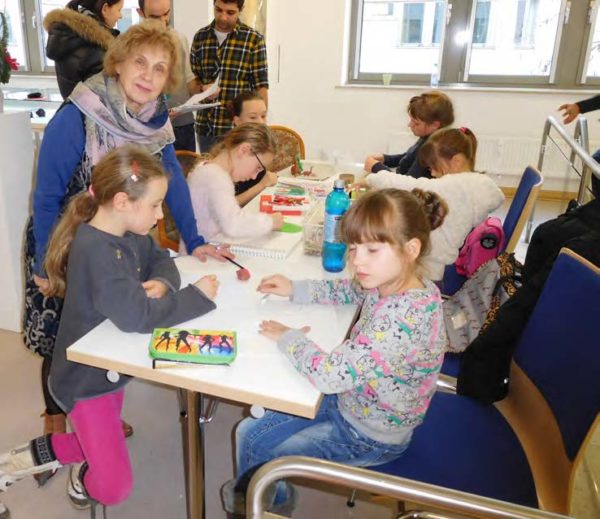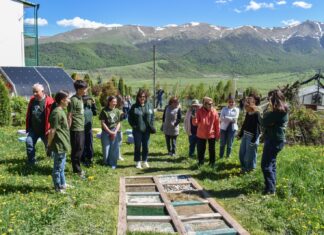WIESBADEN, Germany — After 30 years’ living and working in Germany, two leading Armenian artists are packing up their canvases and brushes, their books and personal belongings, and will soon board a plane for Yerevan. Nona Gabrielyan and her husband, Van Soghomonyan, are an institution in Wiesbaden, the capital of the federal state of Hessen, located in the Rhine-Main area near Frankfurt. Since 1992, when they arrived here from Yerevan, their Atelier N&V has been a reference point for artists, students and art lovers. It is located on the Bismarckring, one of the main arteries of the city, this one named after the famous Iron Chancellor, who oversaw the unification of Germany.
On November 27 and 28, the atelier filled up with people, friends and collectors, who had received an invitation to come by, to say farewell. “It is difficult for us to leave Germany,” they had written, and expressed their joy at being able “to greet so many friends at this time.” They will be sorely missed.
In their workshop and gallery, they have not only painted and sculpted but, since 1995, have shared their craft and works with the community. In that year, Nona Gabrielyan began teaching master classes in painting and graphics, and has educated more than 55 aspiring artists. In addition, beginning in 2004, she began lecturing on Culture and Creativity at the local Volkshochschule, an institution for adult education, and continued for 16 years.

Art and Universality
Gabrielyan and Soghomonyan are Armenians, but their activity and art transcend national borders. Both were born in Tbilisi, Georgia, Soghomonyan in 1937 and Gabrielyan in 1944. Van studied at the Academy of Art there from 1956 to 1958, then at the Fine Arts and Drama Institute Yerevan from 1963 to 1969. Gabrielyan moved to Yerevan in 1963, where she studied sculpture at the same academy, graduating in 1968. The two met there and married in 1965. It was a time when ceramic art was undergoing innovative changes, and Gabrielyan explored the new possibilities in the medium to expand its expressive capacities in graphics and painting, especially using clay. In 1971 she and her husband became members of Artists’ Union of Armenia. In the 1970s and 1980s, Soghomonyan was working in sculptural ceramics, which one critic categorized as “lyrical and philosophical.”
In the 1990s Armenia was going through multiple crises with the earthquake, the collapse of the Soviet Union and the Karabakh war, which plunged the population into chaos, hunger, poverty.









